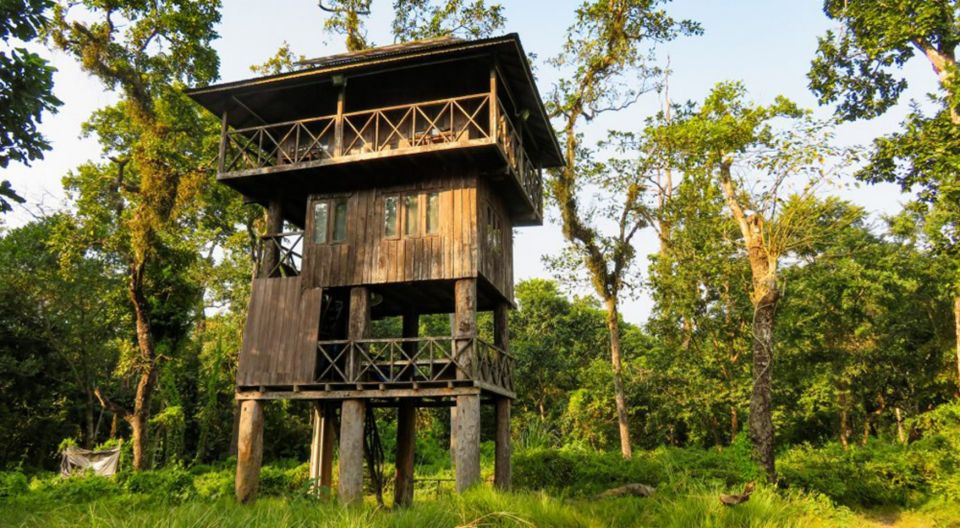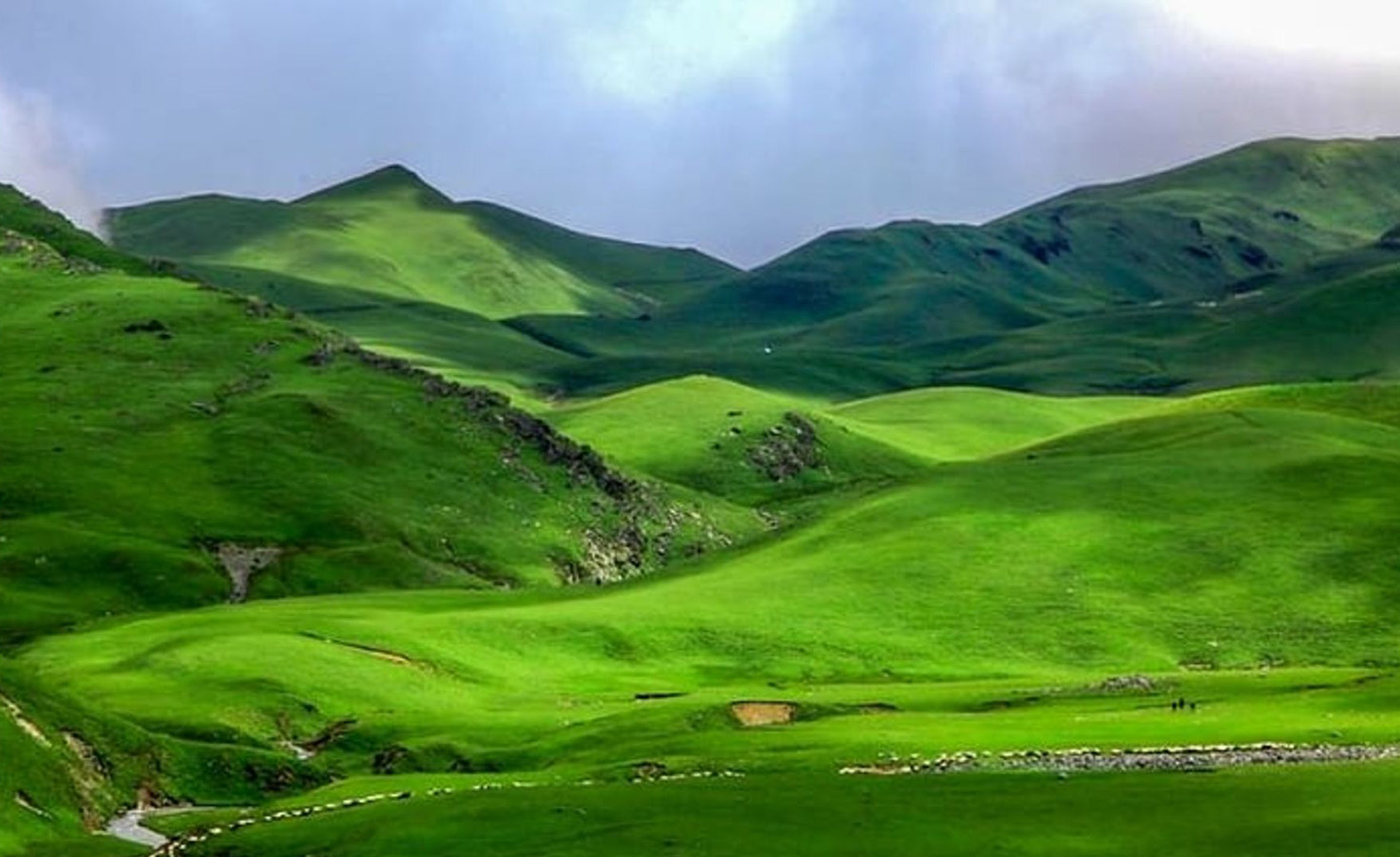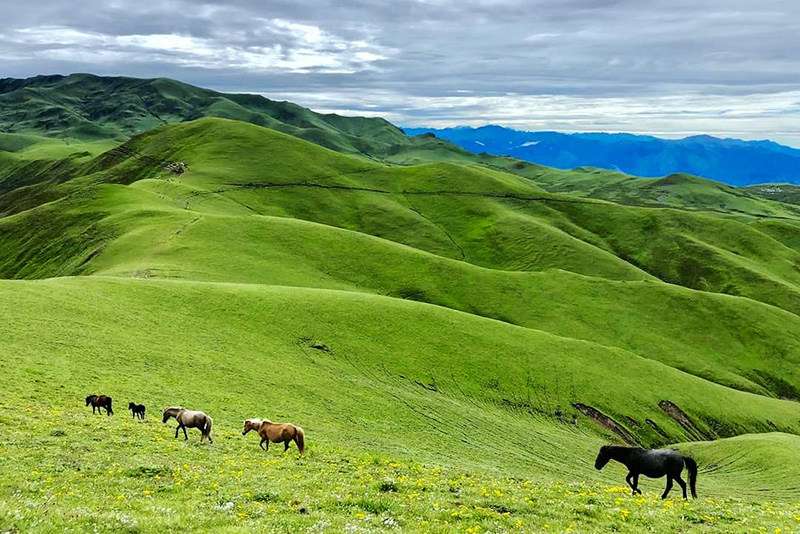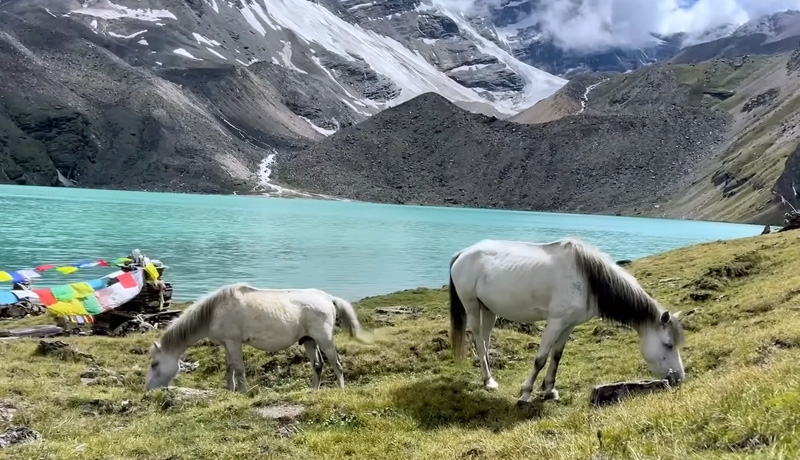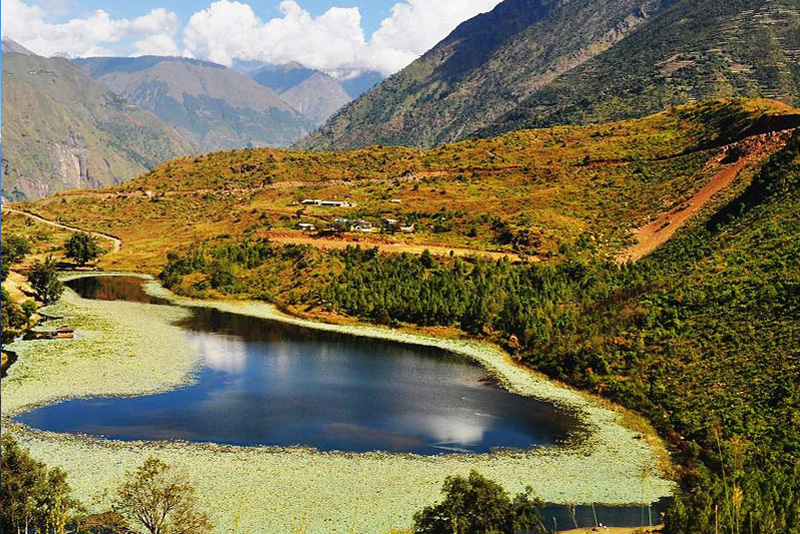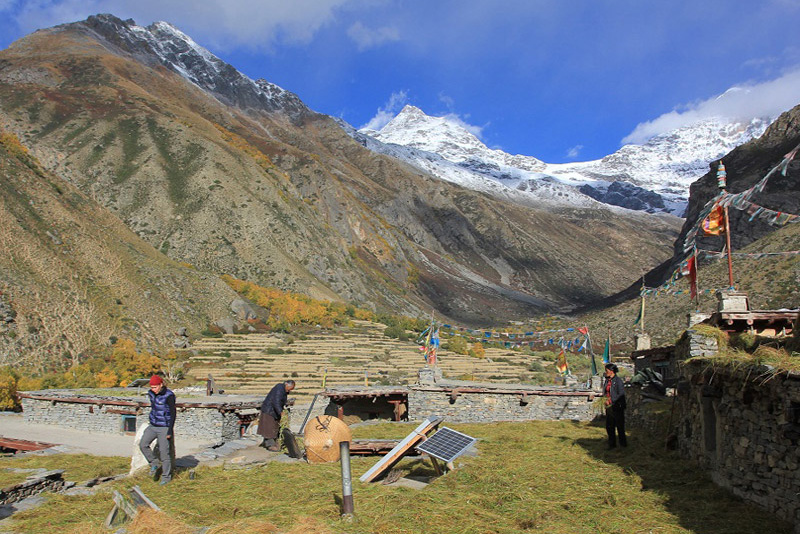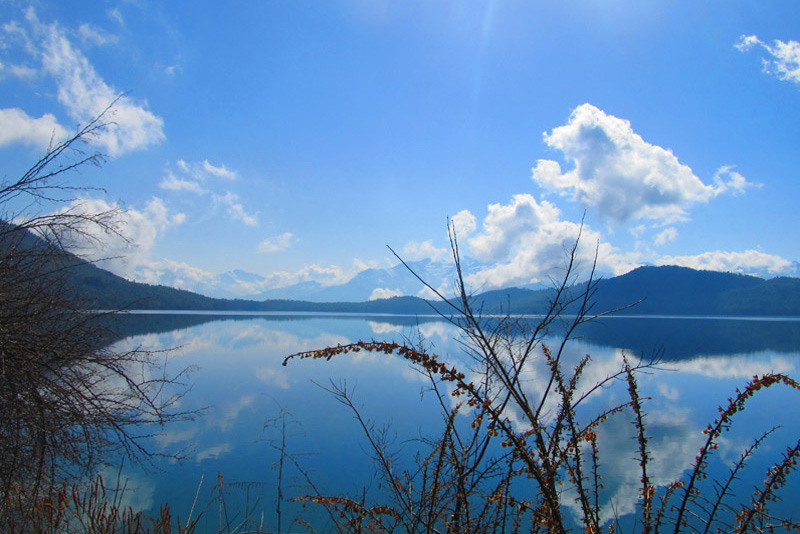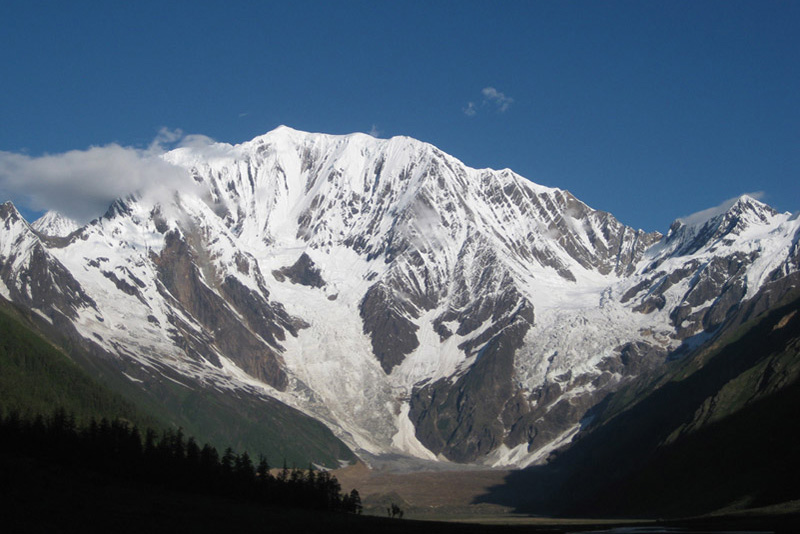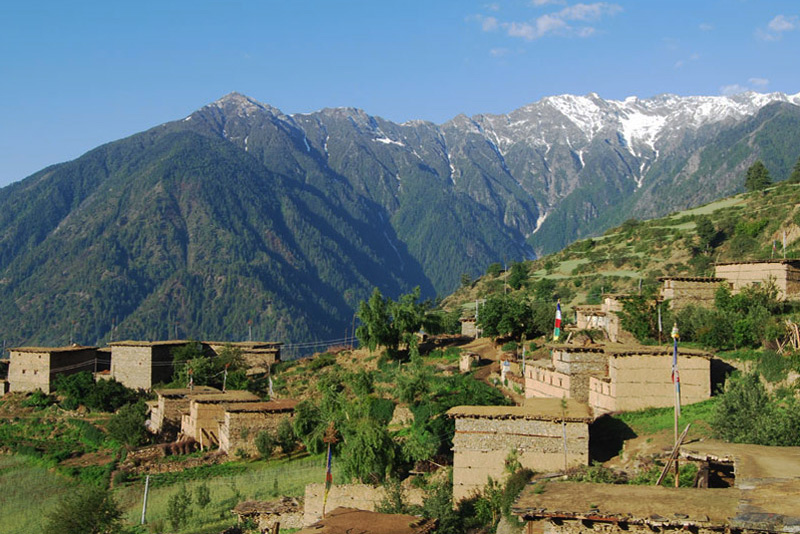Badimalika Trek
Badimalika Trek is one of the best treks in western Nepal, allowing visitors to discover the rural villages, culture, and natural beauty of an untouched region. Badimalika Temple (4,219 m), dedicated to Bhagwati, is located in the Bajura area of West Nepal and is one of the most famous spiritual destinations. This newly discovered, previously unexplored hiking route features high passes, an ethnic community, unexpected natural beauty, a spiritual experience, the way of life of residents, green hills, white Himalaya, a distant natural camp site, a wilderness track, and a panorama. The program is extended to Khaptad National Park, which is located at an altitude of more than 3000 meters above sea level and is one of the ideal places to practice self-meditation and be inspired by beautiful environment. The Triveni Temple is located at the intersection of four districts Bajhang, Bajura, doti, and Accham in these national parks. Khaptad National Park has a rolling plateau of grasslands, Natural and spiritual pounds, various types of herbs, an abundance of flora and fauna, and a magnificent view of the Mt. Api and Mt. Saipal ranges; consequently, this combined cultural Trekking trail of west Nepal, known as the Badimalika trek, is one of the best west Nepal heritage trekking trails based on Nature, Culture, and tradition.
Badimalika Trek Highlights
The Badimalika Trek is a lesser-known trekking route in far-western Nepal, offering a unique and culturally rich experience. Here are some highlights of the Badimalika Trek.
Cultural Diversity: The trek takes you through various ethnic villages inhabited by different groups, including the Baitadi, Darchula, and other indigenous communities. This provides a unique opportunity to immerse yourself in the diverse local cultures, traditions, and lifestyles.
Off the Beaten Path: The Badimalika Trek is less frequented by tourists compared to more popular trekking routes, giving you a more authentic and less commercialized experience.
Spiritual Significance: The trek is named after the sacred temple of Badimalika, which is a significant pilgrimage site for Hindus and Buddhists alike. The temple is dedicated to Goddess Bhagwati and attracts devotees from the region.
Scenic Beauty: The trek offers stunning views of the surrounding landscapes, including picturesque hills, valleys, and the majestic Himalayan peaks in the distance.
Rich Biodiversity: The route passes through forests with diverse flora and fauna, offering opportunities for nature enthusiasts and birdwatchers.
Local Hospitality: Since the trek is not as crowded, you’ll have the chance to interact closely with locals and experience their warm hospitality. Staying in local homestays can provide a more personal and immersive experience.
Traditional Villages: The trail takes you through charming rural villages, each with its own unique charm and architectural style. You’ll have the chance to witness traditional farming practices and local craftsmanship.
Challenging Terrain: While the Badimalika Trek is not as strenuous as some of the more popular treks in Nepal, it still offers a decent level of challenge, making it suitable for trekkers looking for a moderate adventure.
Remote and Serene: The trek offers a sense of tranquility and remoteness that is often harder to find on more crowded routes. This allows you to connect deeply with the natural surroundings and local communities.
The Best time for Badimalika Trek
The best time for the Badimalika Trek in Nepal is during the spring (March to May) and autumn (September to November) seasons. These months offer the most favorable weather and trekking conditions for a comfortable and enjoyable experience. Here’s why:
Spring (March to May):
Spring is one of the most popular times for trekking in Nepal, including the Badimalika Trek. The weather is generally stable, with clear skies and mild temperatures. The hills and valleys come alive with blooming flowers and lush greenery. The views of the surrounding landscapes and distant Himalayan peaks are usually excellent.
Autumn (September to November):
Autumn is another prime trekking season in Nepal and is considered one of the best times for the Badimalika Trek. The weather is clear, with dry conditions and excellent visibility. The temperatures are moderate, neither too hot nor too cold, making it comfortable for trekking. The autumn months provide stunning views of the landscapes, including the vibrant colors of changing leaves.
During these seasons, the trail is generally in good condition, the weather is pleasant, and you’ll have the opportunity to witness the cultural festivals and local activities that often occur during these months. The Badimalika region can experience harsh weather during the winter months (December to February) and monsoon rains during the summer months (June to August), making these seasons less favorable for trekking due to potential trail challenges and weather-related inconveniences.
When you arrive at Tibhuvan International Airport, our guide will pick you up and take you to your hotel in the bustling Thamel district of Kathmandu. Depending on your arrival time, you can choose to relax for the next journey, see the city’s attractions, or shop for adventure gear in one of Kathmandu’s many adventure supply stores. We’ll assemble our bikes and be ready for the journey in the afternoon.
The tour commences with a flight to Dhangadhi (800 meters). Dadeldhura is a four-hour trek down the Godavari River from Dhangadhi (2000 meters). Dadeldhura is renowned for its unique culture and customs. The primary tourist attractions in Dadeldhura are the renowned Ugratara temple as well as historical buildings such as Amargadhi Fort and Alital.
After breakfast, you continue a four-hour journey to Sanfe of Achham. Sanfe is a charming city with numerous alternatives for lodging and dining. From this location, two roads run to Bajura’s Martdai and Achham’s district headquarters, Mangalsen. After lunch, you will take the first route along the BudhiGandaki River. After three hours of travel, one can reach Jadanga. There are a few teahouses and a health center in the tiny community of Jadanga.
After breakfast, you continue strolling through wonderful scenery. The hike is predominantly uphill. After a three-hour hike, one reaches BudhaKrodh, a little hamlet with breathtaking scenery, waterfalls, green forests, and murmuring streams. There are several plant and animal species in the area. We will spend the night in BudhaKrodh, the final settlement on our itinerary. This path beyond BudhaKrodh only goes to buffalo barns.
After breakfast, you resume your trip through the deep forest. After lunch, the trail climbs to an altitude of 3,800 meters. At this height, hikers are subject to acute mountain sickness. The journey then continues through expansive flower-filled plains. After lunch, a three-hour hike will bring you to the village of Bhito, where you will spend the night.
After breakfast, the ascent commences. You will pass past expansive grasslands, waterfalls, and bubbling streams along the trip. After a five-hour journey, we reach Triveni, our destination for the day. Triveni is a place of religious significance. During large events such as Janai Poornima, this tiny area is filled with over 1,500 tents. People bathe in the local rivers before walking to the Badimalika temple early in the morning.
The mornings in Triveni are lovely because you may climb nearby hills for breathtaking views of the surrounding area. You will need to bring your own lunch because there are no restaurants in the area. The path to Badimalika is lined with beautiful plants and flowers. On the way, devotees visit the Lodibinayak temple to pay homage to Lord Ganesh. The position offers breathtaking views of the Badimalika temple and the Triveni River in the distance.
Get up early to witness the API and Saipal mountains glistening in the morning sun. Indescribable is the view of the morning and the huge plains below. Atop Badimalika hill, above the clouds, one feels as though they are on top of the world. Pilgrims believe that the goddess Badimalika granted people every wish. After lunch, you begin your descent toward ‘Dhawalpur Lake’ Due to the path’s steepness, some travelers could find it nerve-wracking. Nevertheless, once you reach DhawalpurLake, you will feel refreshed. It is a beautiful place to spend the night.
Dhawalpur Lake is a beautiful lake surrounded by a dense forest. Dhawalpur Lake has a surface area of 500 square meters and a height of 2,556 meters. Lamagadh is situated at an altitude of 2,195 meters above sea level and provides breathtaking views of the Bajura region. Silgadhi is the district headquarters of Bajura. The principal attraction here is the Shiva and Parvati-dedicated Shaileshwori Temple.
Dhawalpur Lake is a beautiful lake surrounded by a dense forest. The lake measures 500 square meters and is situated at an altitude of 2556 meters. Three hours of hiking are required to reach the renowned Natyashwori temple from Dhawalpur Lake. According to legend, after visiting Badimalika, one must visit Natyashwori. A half-hour journey from Natyashwori will bring you to Lamagadh, the day’s final destination. From Lamagadh, one can enjoy spectacular views of many Bajura monuments.
The travel to Mourya begins in the morning. Along the journey, the confluence of the Budhiganga and Malagadh rivers can be observed. Due to the area’s natural beauty, it is a popular tourist destination. After lunch, we leave Mourya and proceed to Silgadhi, the district capital of Doti.
Hindus hold the renowned Shaileshwori Temple at Silgadhi in high respect. Visitors could pay a visit. After breakfast, you depart Silgadhi and go to Dadeldhura for lunch before arriving in Mahendranagar for the night. After a long journey, one can unwind in one of Mahendranagar’s luxurious hotels.
After breakfast, you travel to Shuklaphanta National Park to observe the world’s largest herd of swamp deer, locally known as Barasinga. In addition to black deer, more deer species can be observed. Then, you will proceed to the Mahakali River to observe the largest suspension bridge in Nepal. It is time to depart for Dhangadhi.
You will fly from Dhangadhi to Kathmandu in the early morning hours. You may once again appreciate the mountain vista. Check into your accommodation upon arrival in Kathmandu and get some rest. You may continue to explore Thamel into the evening.
Today we will take you to the airport to catch your flight out of Nepal. Alternatively, if you’d like to stay longer, we may make additional travel arrangements to assist you continue your cycling experience.
- All necessary ground transfers.
- All necessary accommodations as per the itinerary.
- Tea House accommodations during the trek.
- Daily breakfast, lunch and dinner during the trekking.
- All necessary paper works.
- All necessary tre
- kking permits.
- Experienced and First Aid-trained trekking guide.
- Strong, helpful porters.
- Comprehensive medical supplies.
- Trekking map.
- Insurance of all local team.
- Warm clothing and trekking gear for staff.
- Sleeping bag and trip duffle bag.
- Trekking certificate issued by us.
- Welcome and farewell dinner in Kathmandu.
- Nepal Visa fee.
- International flights.
- All meals not mentioned in inclusions.
- Personal expenses not stipulated.
- Optional add-ons.
- Gratuities.
You might also like...
Top Add-on Trips
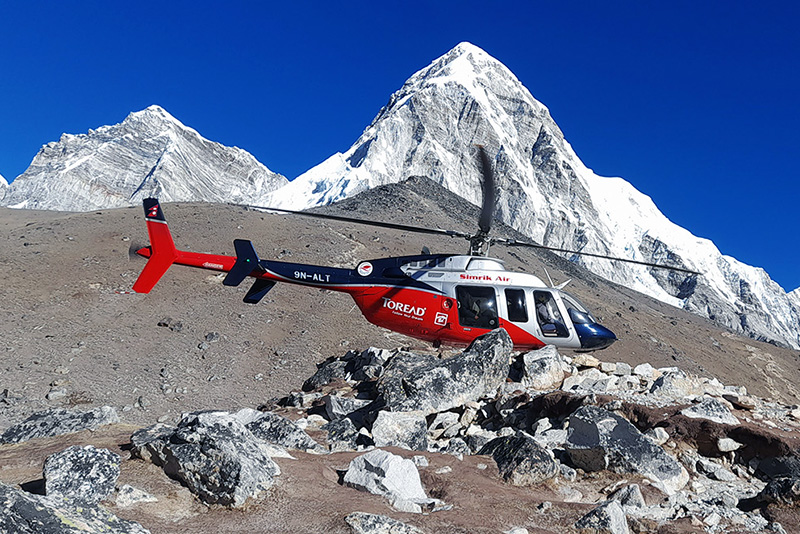
Everest Base Camp Helicopter Tour

Monastery Stay Tour
